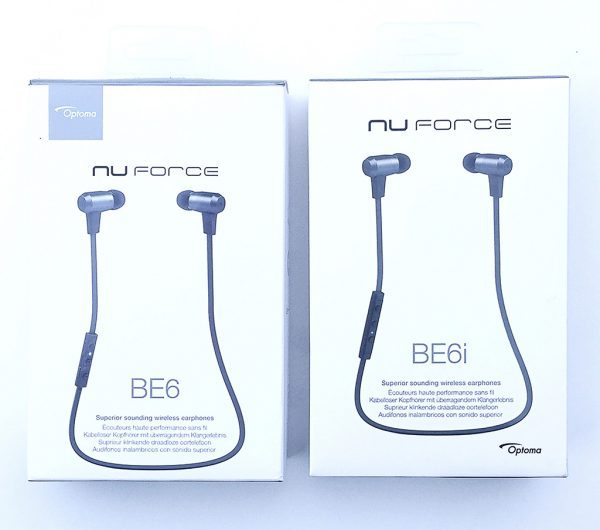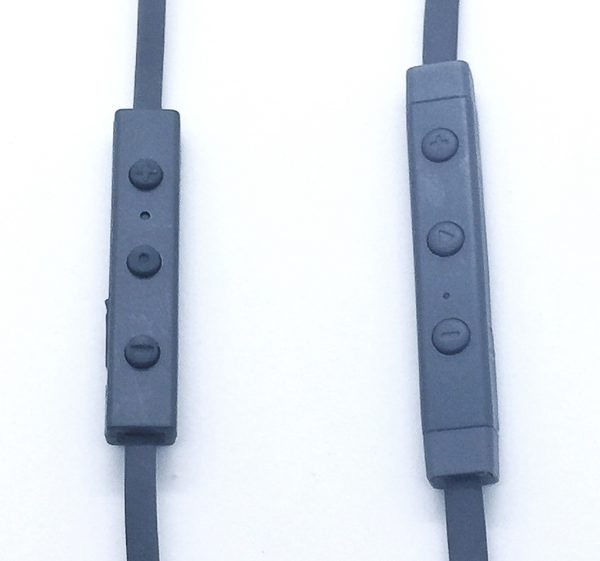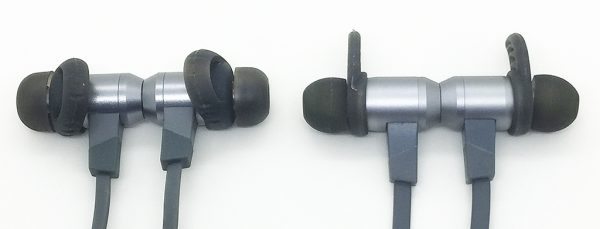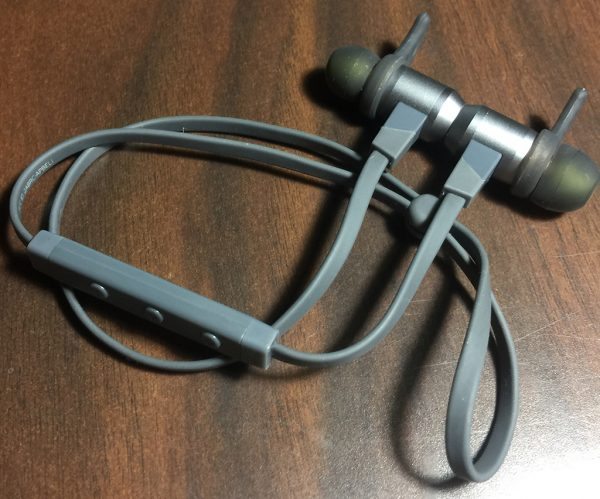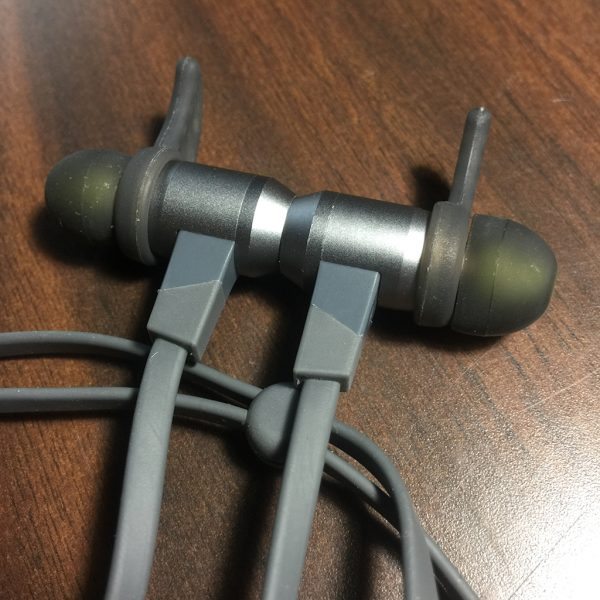
Several months back, in August 2016, I reviewed the Optoma NuForce BE6 Bluetooth wireless headphones. Not long after that review was posted here, Julie let me know that Optoma had already released an updated version of the NuForce BE6, called the NuForce BE6i. Overall I’d been happy with the NuForce BE6, with the exception of some issues with moisture, but the NuForce BE6i was being touted as having improved water resistance, so I was keen to give the updated model a try. Let’s see how they did! Gadget on!
In full disclosure up front, this will not be a full review. The Optoma NuForce BE6 and Nuforce BE6i are very similar devices, so please refer to the previously-posted BE6 review for most of the features and performance aspects of both devices, and I will be highlighting and focusing on differences between the two products in this review.
Packaging
The packaging of the BE6 and BE6i are virtually identical, as seen in the images above and below.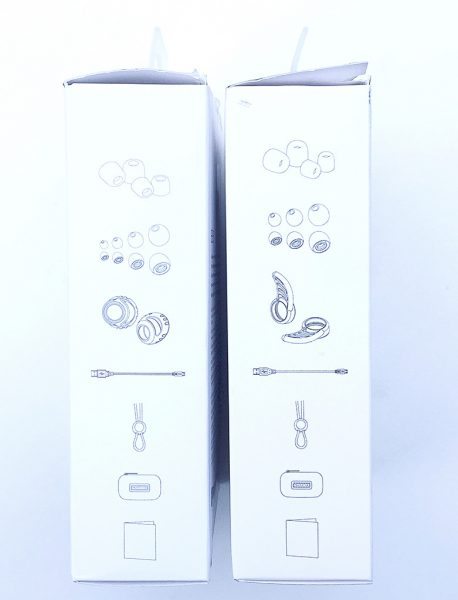
The only appreciable difference between the packaging of the two products is very subtle. Do you see it in the image above? There is a very slight difference between the earbud stabilizers between the two sets of headphones. More on this below. 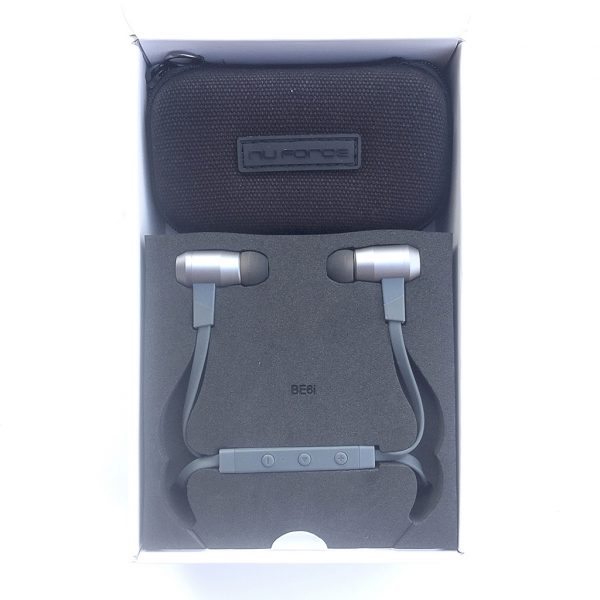
As seen in the image above, the interior packaging of the BE6i was very secure. What can also be seen is the subtle difference between the inline remote of the BE6i. Again, more on this below.
Contents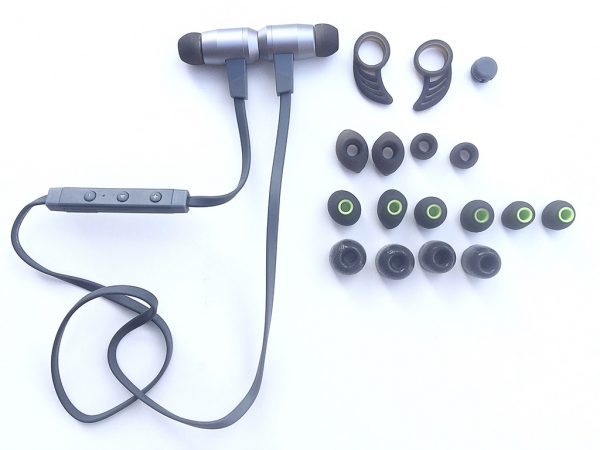
The BE6i includes the following items (as depicted in the image above):
- Nuforce Optoma BE6i Bluetooth headphones
- 3 pairs of standard depth silicone tips (with the green inserts)
- 3 pairs of reduced depth silicone tips
- 2 pairs of Comply™ Sport foam tips
- 1 pair stabilizers
- 1 cable management clip
- Carry case
- Charging cable (USB to micro-USB)
- Quick start guide
- Safety instructions
Features and Functions
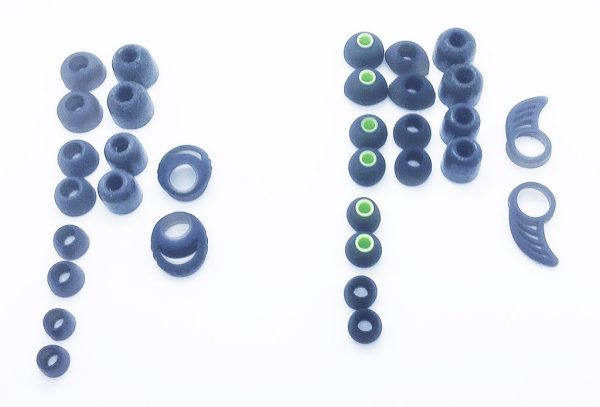
Above, a comparison between the BE6 accessories on the left and the BE6i accessories on the right. You will notice that, as mentioned above, the BE6i includes an extra set of earbud tips, the reduced depth style. These are to help the user personalize the fit of the earbuds. Additionally, the design of the ear stabilizers has changed between the BE6 and the BE6i. More on this below.
In the closeup of the in-line remotes above, you can see one of the subtle differences between the BE6 on the left and the BE6i on the right. The remote of the BE6i is slightly longer, with what appears to be some additional components attached to where the cables exit the remote. This is pure speculation on my part, but my assumption here is that these added components serve two functions: to provide some additional strain relief to the cables so that they do not wear and eventually break in this location, and to provide some additional moisture resistance to the remote in a spot that might be more susceptible to moisture ingress. There are also some very minor differences between the control buttons as well as the location of the tiny LED indicator.
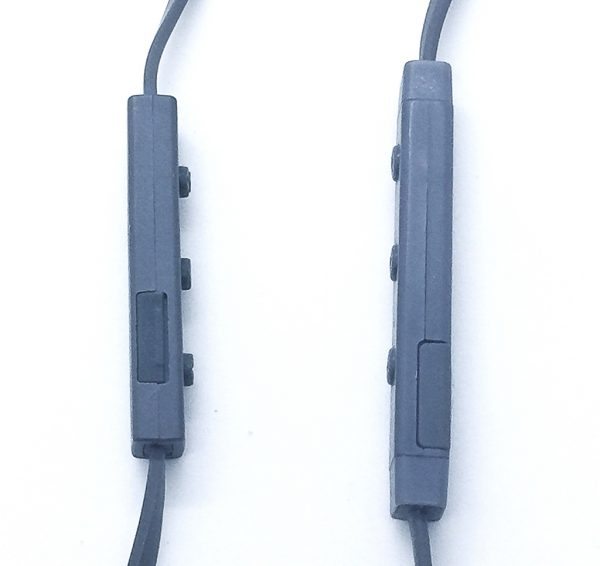
The closeup image above highlights another difference between the BE6 and the BE6i: the USB charging port cover. With the BE6 on the left, the cover is a flexible piece of silicone that is a bit difficult to open; you have to dig at it a bit with your fingernail. With the BE6i on the right, the cover is a harder plastic, apparently made from the same material as the rest of the remote. It seems to sit more flush and fit a bit more snug into the remote’s case, which I suspect provides additional resistance to moisture ingress. However, because it slightly overhangs the edge of the remote’s case, it is a bit easier to open. Two other differences are the very lightly lower-profile buttons on the BE6i and the fact that the USB ports themselves have switched sides.
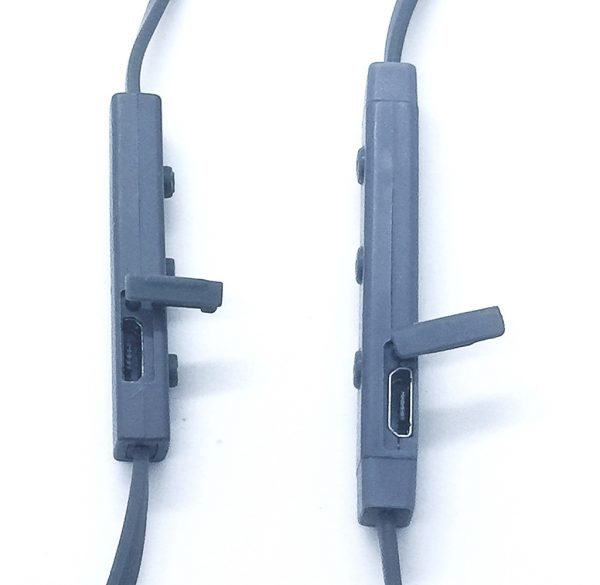
The final closeup above illustrates a bit more detail on the difference between the USB port covers as described above.
As mentioned above, one other difference between the predecessor and successor are the ear stabilizers, designed to help keep the earbuds in your ears, particularly during more strenuous activity. The BE6 version, on the left, are somewhat of an elliptical shape, while the BE6i version, on the right, are more hook-shaped, like a comma (“,”). Incidentally, neither version really helped keep either of these headphones in my ears while exercising vigorously, but more on this below.
Performance
The BE6i performed very similarly to its recent predecessor, the BE6. The sound quality and responsiveness of the controls were virtually identical, from controlling music to answering phone calls. The main difference between the two devices as touted by Optoma was the increased moisture resistance of the BE6i, which is claimed to be an IPX5 rating. Based on my usage, it does achieve this. I used the BE6 and BE6i in several times in virtually identical workouts and conditions. And if you have read my review of the BE6, you will know that I am a pretty heavy sweating machine when I exercise. Once the sweat was flowing, the BE6 did occasionally exhibit erratic symptoms that could be attributed to moisture ingress (popping, static, unresponsive controls), the BE6i did not exhibit these even once. It is of course, a “Farmer John” test (slang for an anecdotal and unscientific evaluation), but as far as I am concerned, the BE6i does achieve its claimed aim of increased moisture resistance. However, I probably wouldn’t take them swimming or running in the rain.
Additionally, the BE6i does also seem to have some improved battery longevity. Where the BE6 lasted between 4-6 hours for me, the BE6i lasted a good 6-8 hours, which makes them much more useful.
The only real issue I had with the BE6i was the same issue that I had with its predecessor, and that is that they fell out of my ears during heavy exercise, even using the stabilizers. For me, they worked very well for listening to tunes while sitting at my desk at work, and they worked reasonably well for mild to moderate exercise. However, as noted above, I typically exercise a bit beyond the mild to moderate range, and they tended to fall out often while doing so. However, to be fair to the BE6i, I have had this issue with every pair of headphones that I have ever tried. I suspect that I have abnormally large ear canals. 🙁
Conclusion
The Optoma NuForce BE6i has a very similar appearance, features, functions, and performance compared to its predecessor, the BE6, which I reviewed a while back. As claimed by Optoma, the main difference between the two devices is the BE6i’s claimed increased moisture resistance. In practice, I did find this to be the case. Although they are a bit more expensive than their predecessor, I think the additional cost for the improved moisture resistance and battery life is probably worth it, especially if you are planning to use the BE6i during exercise. If you are looking for a set of Bluetooth headphones suitable for exercise, I’d encourage you to take a look at the Optoma NuForce BE6i.
Update 5/1/20
The irony with this product is that the Optoma NuForce BE6i didn’t last as long as the version of these wireless headphones that I previously reviewed, the Optoma NewForce BE6. The BE6i performed quite well until they just suddenly stopped working for no apparent reason; they just wouldn’t charge anymore.
Source: The sample for this review was provided by Optoma. Please visit their site for more information and Amazon to order.
REVLIXI Google Review Stand -Boost Reviews w/Reusable Google Review Tap Card Stand & QR Code Stand- No App or Subscription - Android & iPhone Compatible-Boost Google Reviews for Online Growth
$24.89 (as of December 10, 2025 18:01 GMT -05:00 - More infoProduct prices and availability are accurate as of the date/time indicated and are subject to change. Any price and availability information displayed on [relevant Amazon Site(s), as applicable] at the time of purchase will apply to the purchase of this product.)Google Review Tap Cards (3-Pack) by TapFive - Tap for Instant Reviews - All Phones Compatible - Reusable Smart Tap NFC & QR - Boost Business Reviews - Powered by TapFive (3 Card Pack)
$34.90 (as of December 10, 2025 18:01 GMT -05:00 - More infoProduct prices and availability are accurate as of the date/time indicated and are subject to change. Any price and availability information displayed on [relevant Amazon Site(s), as applicable] at the time of purchase will apply to the purchase of this product.)Product Information
| Price: | $129.99 MSRP |
| Manufacturer: | Optoma |
| Retailer: | Amazon |
| Requirements: |
|
| Pros: |
|
| Cons: |
|

